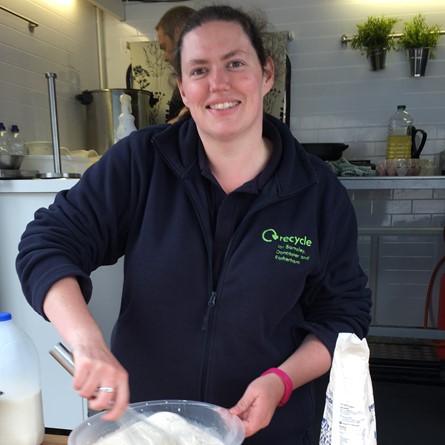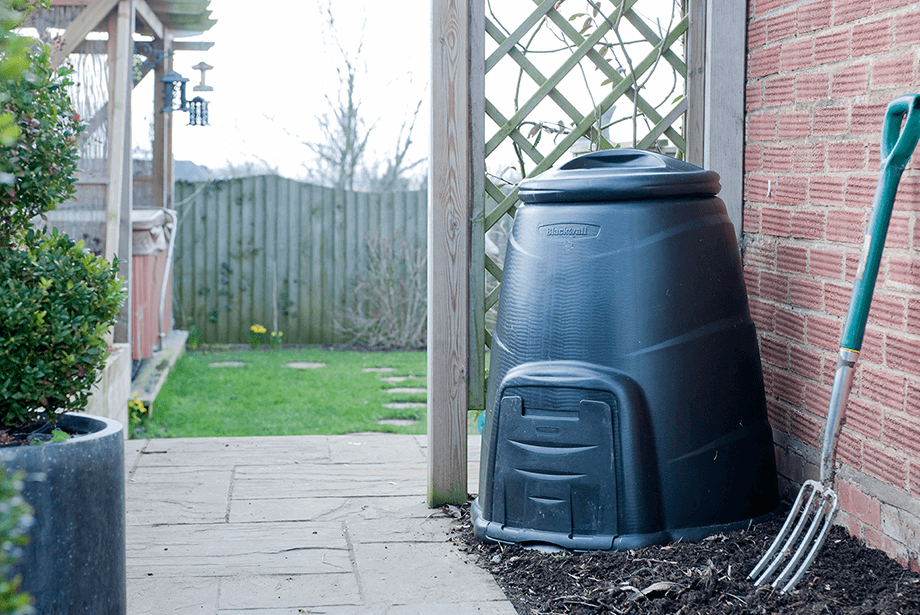Getting good compost is a bit like baking a cake, the ingredients and conditions need to be just right. The three main things to think about are the conditions inside your bin, the mix of ingredients and getting plenty of air involved.
Conditions inside your bin or heap
For composting to work most efficiently the temperature and moisture level in the bin or heap need to be just right.
Q: My compost heap just doesn’t get warm, what can I do?
A: If you’re using an uncontained compost heap this needs to be at least 1m2 in order for it to reach the temperatures required to make compost, consider using pallets lined with flatten cardboard boxes or wooden planks to help contain it and keep the heat in.
Moisture
Q: The material in my compost is really dry, what can I do?
A: If your material feels and looks dry to the touch you can water the contents of the bin with rain water or for an extra kick soak nettles or comfrey leaves in a bucket of water for a few days before using this to water the compost. The mix needs to be damp but not saturated to make the best compost and the comfrey or nettles just add a little nitrogen boost to help rot down the dense carbon-rich material.
Q: The material in my compost is really wet, what can I do?
A: If the material in your bin is very wet and saturated you can mix in some shredded paper to improve this. If it is winter make sure your lid fits well and isn’t letting in water, if it is a warm, dry summer leaving the lid off and covering the contents with some hessian instead may reduce the wetness naturally.
Temperature
The material in your bin should ideally be between 32◦C and 55◦C to make compost efficiently. The microbial action in your bin will heat the contents up but in cold weather it may be necessary to insulate your bin or heap using flattened cardboard boxes, old carpet or old rubble or compost sacks.
Q: How do I know if my bin is the right temperature?
A: You can use a compost thermometer to measure the temperature of your bin / heap but as you become more experienced, you’ll be able to spot the signs that your bin is getting too hot or too cold by changes in how active it is at making compost.
Turning the contents of your bin regularly is a great way to spread the warmth around and combat hot / cold spots.
The mix of ingredients
To make good compost your bin needs an even mix of soft nitrogen rich greens and denser, woody, carbon rich browns. It’s also important to never include cooked or raw foods such as meat, dairy and bread.
Greens
Some great greens include things like grass cuttings, fruit and veg peelings, tea bags, annual weeds and flowers.
Q: My compost is wet and green, is that right?
A: If your compost is very wet, slimy, smelly or sludgy and green there is a good chance your green / brown ratio isn’t right. Try mixing in equal amounts of browns and combining these well or adding them in thin layers.
Browns
Some brilliants browns include things like hedge cuttings, prunings, shredded paper, scrunched newspaper, sawdust and pet bedding, straw and cardboard. These should be chopped up small to give a bigger surface area to be broken down.
Q: My compost looks like a pile of dried leaves and twigs, is that right?
A: If your compost is very dry, brittle and contains mummified / dried out items there is a good chance your green / brown ratio isn’t right. Try mixing in equal amounts of greens and combining these well or adding them in thin layers.
Things to avoid
You should never add cooked or raw meat, fish, dairy or bread to a cold compost heap or standard compost bin, these will attract rats.
Try not to include too much citrus in your mix, it is slow to rot down and the worms don’t like the acidity, any you do add should be well chopped up.
Never add pet bedding or poo from any pet that eats meat such as cats or dogs. Pet bedding from herbivores such as rabbit or guinea pigs is fine as part of your browns mix.
Don’t add perennial weeds like brambles or thistles or invasive weeds like ragwort to your compost as this will just spread them when you use it.
Getting plenty of air involved
Your compost heap or bin needs plenty of air to work efficiently and you can make sure it gets this by turning the contents regularly.
The best way to do this is to have 2 bins or heaps on the go, one that you are filling and one that is ‘cooking’. Regularly empty, mix and refill the bin that is ‘cooking’ until you have rich crumbly compost.
Alternatively you can just use a garden fork to mix the contents, this helps to combine the greens and browns, spread the heat around, get plenty of air to the microbes hard at work and also mix the well rotten and newly added material together to speed up the process.
If you struggle to do heavy garden work such as turning with a garden fork you can use a broom handle to poke holes down through the compost, this will help get some air to the lower layers and spread the heat a little, this method is not as effective as mixing all the contents but is an option if you struggle with the alternatives.






